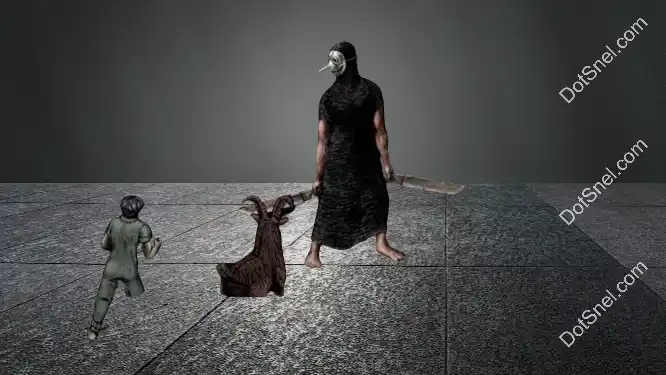Albert Bierstadt: Education And Career
Albert Bierstadt, a German-American artist, is best known for his superb Western landscapes. He went on many Expansion journeys to paint the landscapes he saw. He wasn’t the first painter to feature these landmarks, but he did it better than anybody else.
The Bierstadt family emigrated to the United States when Bierstadt was only one year old. He went back and spent many years in Düsseldorf studying painting. He joined the second generation of the Hudson River School in New York, a loose confederation of artists that began producing work around the Hudson River.
Their painting technique was centered on minutely rendered images with what is often referred to as luminist lighting. Bierstadt, included with the Rocky Mountain School, was a significant interpreter of the western environment.
Early life and education
Albert Bierstadt was born in Solingen, Prussia’s Rhine Province. His mother was Christina M. Henry Bierstadt, a cooper, and (Tillmans). His elder brothers, Edward and Charles Bierstadt were well-known stereo-view photographers. In 1831, when Albert was barely a year old, his family moved to New Bedford, Massachusetts. In his early years, he created excellent crayon drawings and became interested in painting.
When he returned to Germany in 1853, Bierstadt studied painting for many years in Düsseldorf among members of the city’s unofficial school of painting. Then, in 1851, he started working in oils. Finally, after arriving back in New Bedford in 1857, he temporarily taught drawing and painting before committing himself entirely to the art.
Career
When Bierstadt arrived back in New England in the fall of 1857, he started working seriously, and when he let the public inside his studio, everyone was astounded by his brilliance. He had shown his creations in a few nearby houses, but his renown remained hidden. After returning home, he created four significant European landscapes in a month, including Spear Fishing 1857–1858.
Albert Bierstadt’s work needed effort while working on, which served him well for the next forty years. He started advertising to teach again at this point, but just four students signed up in a calendar year. He created one of his rare portraits of an elderly Native American lady named Martha Simon around this period (1857). Here are the most famous Albert Bierstadt paintings:
The Valley of the Yosemite, 1864
The list of Albert Bierstadt most famous painting includes this artwork. It shows the beautiful valley of Yosemite; the Merced River goes smoothly through a section surrounded by immense granite rocks. When immigrants and others started building houses in the region in 1864, He finished creating the Valley of Yosemite.
The Last of the Buffalo
The buffalo represents Native American culture and way of life throughout history. Native American people from North America depended on buffalo to survive the sometimes severe winters in the West.
The most important painter, Bierstadt, created historically and culturally significant pieces for Native Americans who were being pushed from their lands and forced to live on cramped reservations in harsh regions of the United States.
The Rocky Mountains, Lander’s Peak
The Rocky Mountains, Lander’s Peak by Albert Bierstadt is a landscape oil artwork from 1863 that shows the mountains. It’s based on drawings created during Frederick W. Lander and Bierstadt’s 1859 Honey Party excursions.
A campground used by Native Americans can be seen in the forefront, and Lander’s Peak can be seen in the Rocky Mountains, the Wind River Range. In 1865, Lander’s Peak, which sold for $25,000, became an immediate critical and commercial success.
Among the Sierra Nevada Mountains, California
Painting from 1868 depicting a panorama in the Californian Sierra Nevada mountains. The artwork, produced in his Rome studio, was shown around Europe and encouraged people to immigrate to the U.S.
In the winter of 1867–1868, four years after Bierstadt’s trip to the Sierra Nevada, The Sierra Nevada was created in Rome.
A Storm in the Rocky Mountains
A Storm in the Rocky Mountains, an oil landscape painting by German-American artist Albert Bierstadt, was completed in 1866. Again, travel drawings from 1863 served as inspiration.
Albert Bierstadt’s artworks traveled to the Chicago Lakes, situated beneath Mount Evans in the Colorado Rocky Mountains. The work is titled Rosalie Osborne Ludlow, after the then-wife of Bierstadt’s friend, who was also his lover at the time.
California Spring
Albert Bierstadt’s art “California Spring,” with its idyllic scene along the Sacramento River, celebrates the American West as an ideal despite the artist’s ignorance of the complex realities of farming life in the Central Valley, such as overgrazing, frequent droughts, and poverty.
Final years
After a protracted battle with TB, Rosalie Bierstadt passed away on March 1, 1893, at 52. A year later, Bierstadt wed Mary Hicks Stewart, the widow of Boston financier David Stewart. The latter was also the father of famous art collector Isabella Stewart Gardner through a previous marriage. Bierstadt gave his new wife the historical artwork Landing of Columbus as a wedding gift. She donated the artwork to the National Museum of Natural History in Washington, D.C., when Bierstadt passed away.
Although his renown waned, Bierstadt continued to paint reasonably regularly while the couple resided in New York City. In addition, the couple visited Europe frequently, and on one of their visits, Queen Victoria hosted them on the Isle of Wight.
They kept their funds separate despite his wife’s affluence. Finally, Bierstadt filed for bankruptcy in 1895. Bierstadt painter, died unexpectedly in New York City on February 18, 1902. His remains are interred next to his parents in New Bedford, Massachusetts, Rural Cemetery.
Conclusion
Because Bierstadt is fascinated with mountainous vistas, Colorado’s Mount Bierstadt bears his name. After Bierstadt’s wife, Mount Rosa, another peak in Colorado, was given that name before being changed to Mount Evans in honor of the state’s former governor, John Evans.
The United States Postal Service published 20 commemorative stamps in 1998 under the title “Four Centuries of American Art,” one of which depicted The Last of the Buffalo by Albert Bierstadt. Many are scattered across the nation in museums. In addition, prints are readily available for purchase in stores.

Shahid Maqsood is an experienced writer and journalist with 10+ years in the industry. He is Content writer and Editor , where he writes daily articles covering topics like books, business, news, sports, and more. Shahid holds an MBA from Virtual University of Pakistan and a Master’s in Mass Communications. He is based in Faisalabad, Pakistan.
His work spans multiple platforms like dosttrusty.com and newsbreak.com,Quellpress.com , airriflehunting, and bruitly.com showcasing his versatility and depth. Shahid’s insightful articles reflect his expertise, authoritativeness, and trustworthiness, making him a respected and reliable voice in digital content creation. His contributions engage and inform readers, embodying professionalism and passion in every piece.







